“Nope” VFX Supervisor Guillaume Rocheron on Creating That Spectacular Alien Creature
Jordan Peele’s extraterrestrial spectacle Nope has a secret you may not know about: the sky itself is a digital recreation. And among the roughly 700 effects shots in the film, VFX supervisor Guillaume Rocheron (1917, Life of Pi) admits it’s one of the most rewarding as “most people don’t realize they’re looking at a giant visual effect.”
The Nope VFX team set out to make the blue ether a haunting character, one indicative of the dooming waters in Spielberg’s 1975 thriller Jaws. “Jordan said if we do our job well, the audience, after seeing the movie, will look at the sky differently. You are going to look at the clouds and have to be scared,” Rocheron tells The Credits. “So the sky became a big subject where we had to design a whole playground for the events to happen.”
Those events Rocheron hints at taking place at the Haywood family ranch, miles outside of Hollywood, where, after the loss of their father (Keith David), siblings OJ (Daniel Kaluuya) and Emerald (Keke Palmer) discover a celestial creature hiding in the clouds, feeding on anything staring at it for too long.
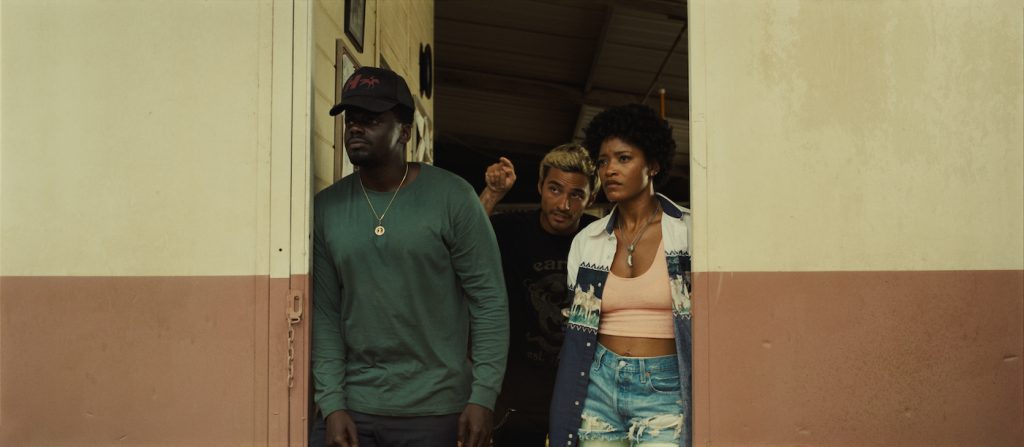
The hurdle wasn’t a simple cosmetic sky replacement but months-long research and development project where innovative tech was created, which allowed them to design cloudscapes that seamlessly blended with the set photography from Dutch cinematographer Hoyte van Hoytema. The results gave VFX complete control over the look and feel of Earth’s atmosphere. Animators were able to lay out the sky and simulate each cloud (and their movements) based on actual altitudes and wind speeds. The digital creations were then infused to match the sunlight and lighting of the location imagery. “It had to be incredibly invisible to the audience, so no one said I’m looking at a digital sky,” says Rocheron. “The challenge was different because our whole movie was about the sky.”
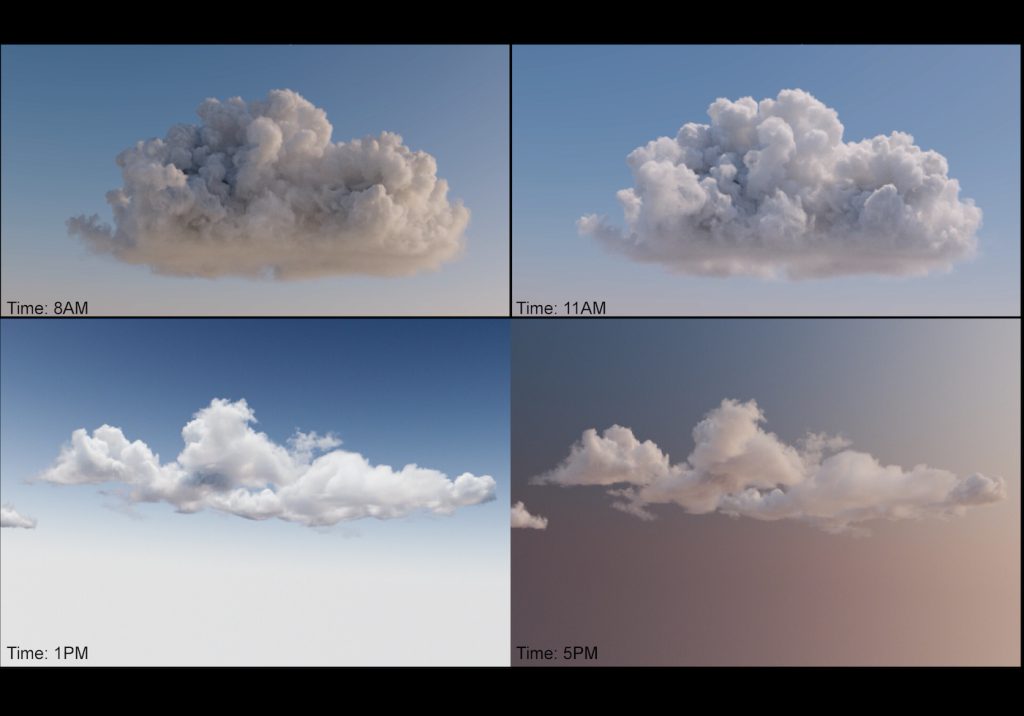
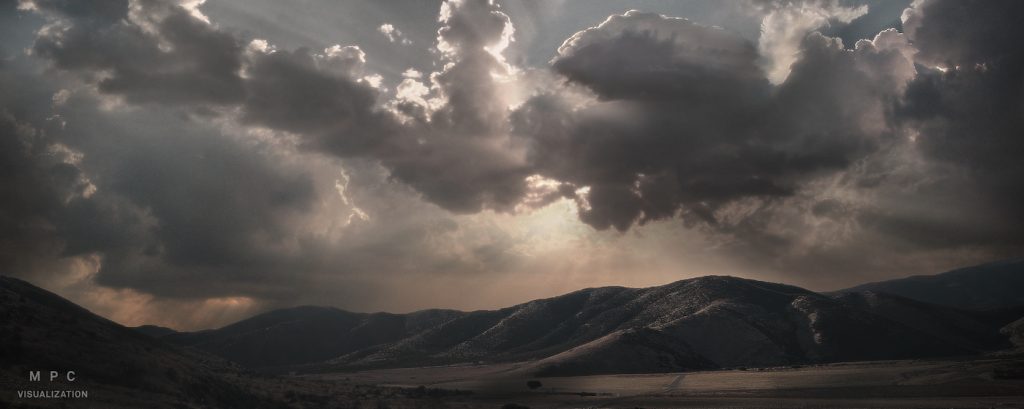
For the entity, which OJ names Jean Jacket after a horse Emerald was promised as a child, its development tracks to when Peele was writing the script. “Jordan had in his head that he wanted a creature that looks like a classic UFO but evolves into something else,” says Rocheron. “Early on in the process, we connected on a minimalistic design. Very simple, very clean. We worked with Leandre Lagrange, our main concept artist, and he came back with some incredibly unique design proposals.”
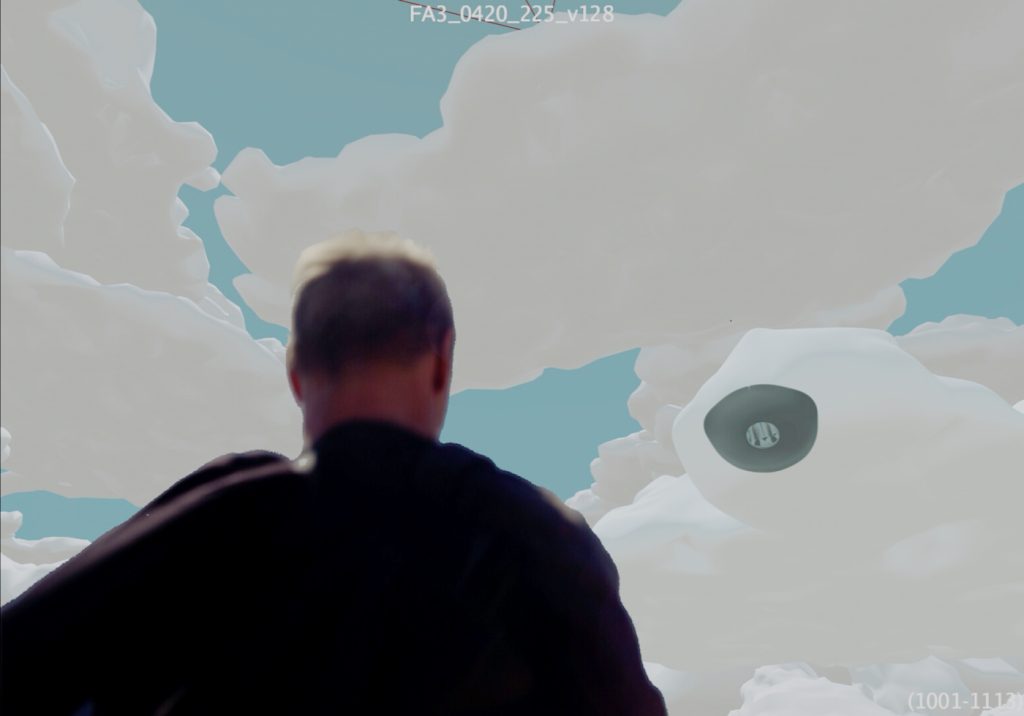
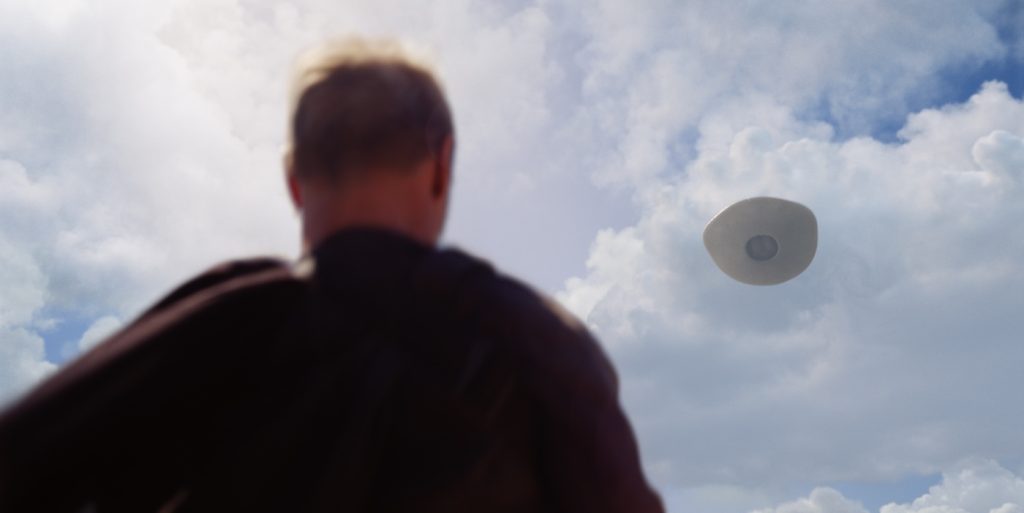
The extraterrestrial had influences from Japanese anime while grounding its movement from real-world animals. “We consulted with John Dabiri, a professor at CalTech who studies jellyfish. It’s one of the most efficient animals in the world as it uses very little energy to eat, move, to do whatever it needs to do because their whole body is designed to be functional,” explains Rocheron. “We started to think about that deeply for our creature.”
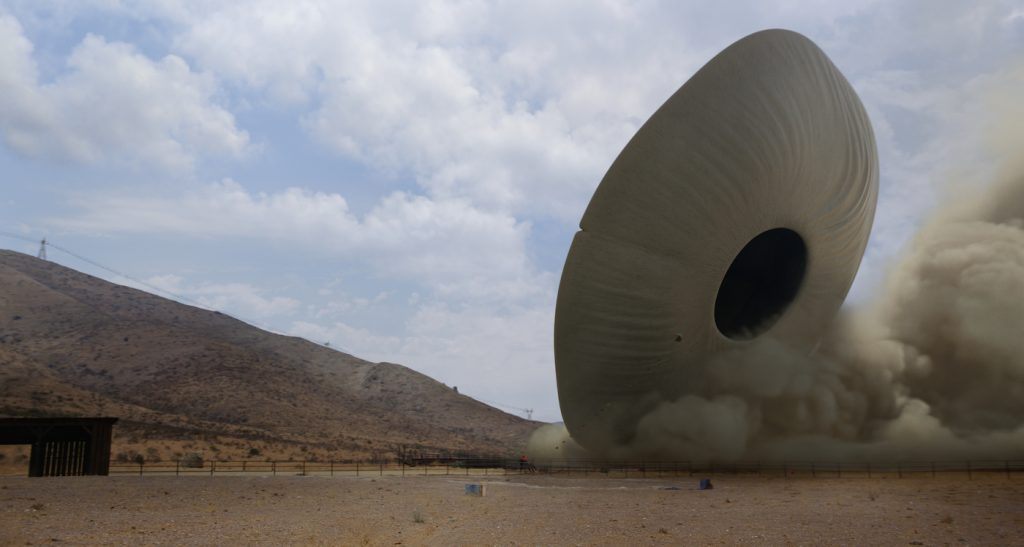
Jean Jacket hides in the clouds shaped in a saucer form as a way not to be exposed. It stretches nearly 250 feet wide with a large hole on the bottom and a square, green eye deep within its shell. “Jordan never said exactly where Jean Jacket comes from but that it comes from a planet that has conditions similar to Earth. An environment where it’s able to ride the wind and air currents skillfully,” notes Rocheron. “Even as a UFO, it doesn’t have an engine. It’s using ion propulsion to propel itself and is perfectly aerodynamic, and is able to detect the wind current. You can see it when you get closer to Jean Jacket. Its shell is not solid but ripples in the wind. It’s incredibly light and is able to pick up the wind speed and be silent and be a perfect predator for this environment.”
The more horrifying scenes in Peele’s film are when Jean Jacket turns into a hunter. Entire bodies of people are pulled through its digestive system where you can hear their screams until they are belched back out like a summer storm. But instead of water, it rains blood. To shoot the sequences, a horizontal semi-transparent set was constructed to look like the digestive tract. LEDs were placed behind to give a sense of movement before visual effects stepped in to create digital body doubles of the people being pushed through Jean Jacket. VFX further added texture to the membrane to give it depth and life. On set, the camera was rotated 90 degrees to aid in the illusion.
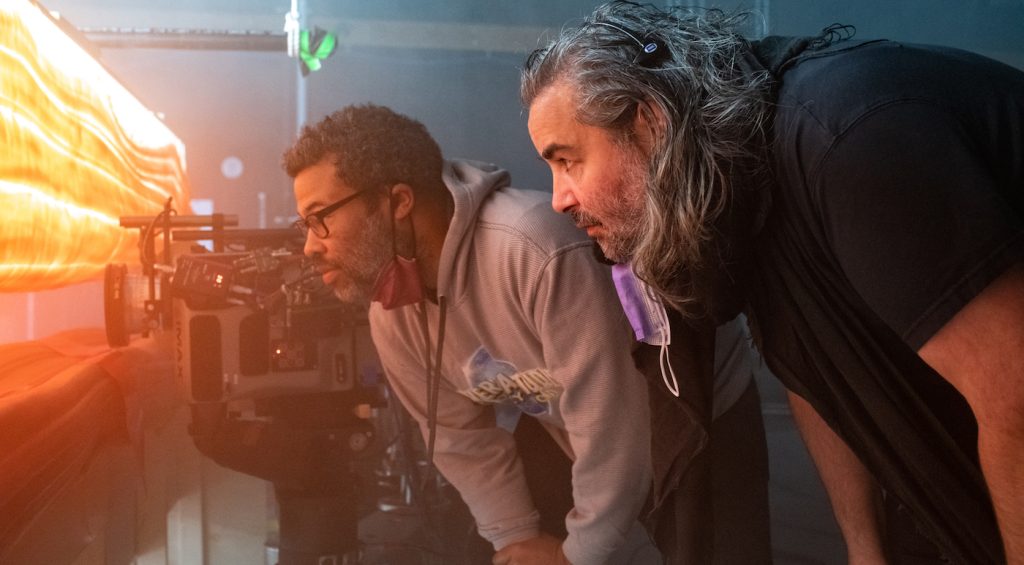
When Jean Jacket unfolds, its entire shape creates a sense of awe. Graceful, it rides the wind using a giant sail and skirt to control its floatation. It’s beautiful, mesmerizing yet haunting. And by the climactic finale, it’s equally indignant as it chases down OJ and Emerald. Visual effects sought to physically ground those waning moments through practical effects (very akin to the production design efforts of Ruth De Jong).
So as Jean Jacket glides closer to the ground, heavy amounts of dust and debris kicks up. To create the swirl, a helicopter was flown mimicking the creature’s movements. “We really tried to drown everything in reality so the actors felt the elements and the danger and the camera could pick it up,” says Rocheron. “The entire film was a real collaboration between special effects, visual effects, and Hoyte about how do we make this [movie] feel grounded and real.”
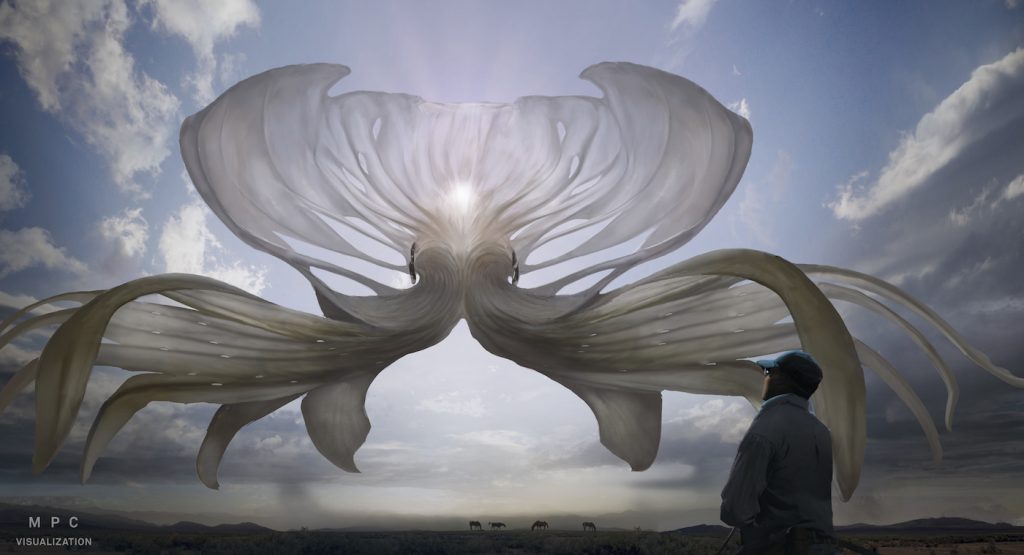
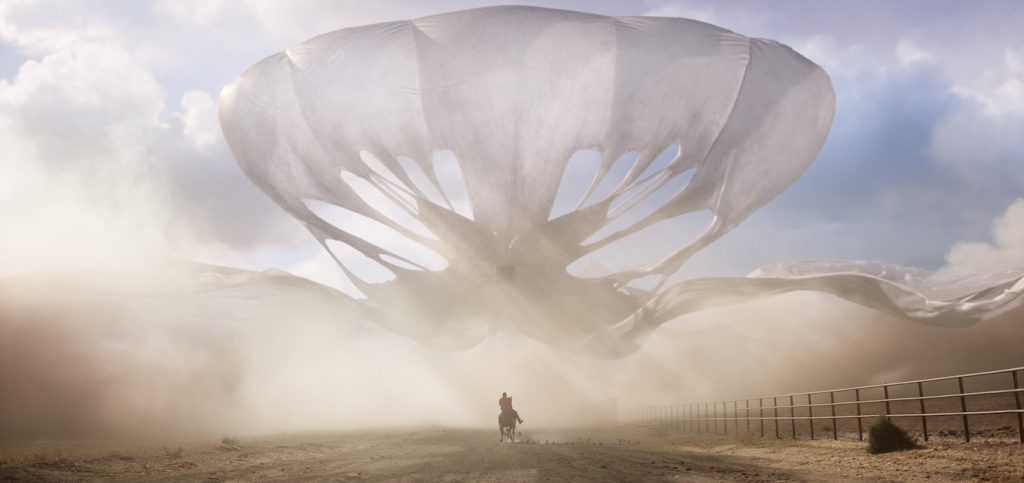
For more on Nope, check out these stories:
“Nope” Composer Michael Abels on Scoring Jordan Peele’s Sci-Fi Epic
How “Nope” Production Designer Ruth De Jong Built & Bloodied the Haywood Ranch
“Nope” Editor Nicholas Monsour Dives Into the Macabre of Jordan Peele’s Sci-Fi epic
“Nope” Cinematographer Hoyte van Hoytema on Capturing the Epic Scope of Jordan Peele’s Latest
Featured image: Courtesy MPC/Universal Pictures.



